Edie Melson's Blog, page 375
June 11, 2015
Don’t Let Your Backlist Titles Evaporate into Thin Air
by Warren Adler @WarrenAdler
 When I decided to set up my own publishing company, Stonehouse Press, I had published 27 novels with major legacy publishers. Many had been translated into numerous foreign languages and nearly half this output were sold or optioned for films. Two feature films had been made, “The War of the Roses” and “Random Hearts,” along with a three-hour trilogy on PBS, titled “The Sunset Gang.”
When I decided to set up my own publishing company, Stonehouse Press, I had published 27 novels with major legacy publishers. Many had been translated into numerous foreign languages and nearly half this output were sold or optioned for films. Two feature films had been made, “The War of the Roses” and “Random Hearts,” along with a three-hour trilogy on PBS, titled “The Sunset Gang.”
My plan was to digitize all the novels and set them up in both eBook and Print-on-Demand form. They were older backlist titles under contract long before eBooks and Print-On-Demand were created, but I was able to get the rights back from the original publishers. Some were out of print. My motive, then and now, was to keep my authorial name alive beyond my lifetime and attempt to take control of my writing career, never again to be beholden to agents or publishers to determine the course of my creative life.
THE SECRET, POWERFUL FANTASY
While admittedly attaining contemporary fame and fortune is a most seductive and primary lure, the possibility of longevity can be a powerful fantasy that lodges itself secretly and obsessively in the mind of the serious artist. Since no one can truly predict the future, this field of dreams will always remain an intriguing possibility whatever the tenor of contemporary judgment.
It follows that I was hopeful that my past novels and those that would be written in the future were worthy of longevity, and would remain “shelved” and available in cyberspace forever, never declared “out of print” and be always available for the possibility of discovery by readers.
 Transferring my backlist to eBooks and print-on-demand was, thankfully, not economically challenging to me at the time. It has since become much less expensive for the novice self-publisher. Of course, the transfer is only the first step. By self-publishing even one novel you are essentially going into business and this entails investment in marketing alongside time and self-promotion on every avenue available, both on the net and off.
Transferring my backlist to eBooks and print-on-demand was, thankfully, not economically challenging to me at the time. It has since become much less expensive for the novice self-publisher. Of course, the transfer is only the first step. By self-publishing even one novel you are essentially going into business and this entails investment in marketing alongside time and self-promotion on every avenue available, both on the net and off.
Stonehouse Press has now published 13 additional novels by yours truly. It has proved to be a major investment, staffed to carry out not only promotions to introduce new novels but funding for promoting older novels. With no middlemen to interfere with my creative production, I have found myself growing ever more prolific now that I am essentially working for myself. Self-determination really focuses the mind.
We allocate time and funds to old novels as well as to new novels, although the introduction of new novels requires additional expense. Distribution is handled by Rosetta Books, a pioneering company that has, like Stonehouse, been through all the growing pains of what is essentially a new medium for the distribution and marketing of books.
 THE SELF-PUBLISHING BATTLEGROUNDThere was a time when traditional publishers who believed in a particular writer might “stake” him or her and publish two or maybe three subsequent offerings, knowing there would be a revenue loss but hopeful that the writer would catch fire commercially at some time in the future. That type of publishing gamble is unlikely to happen in today’s publishing environment.
THE SELF-PUBLISHING BATTLEGROUNDThere was a time when traditional publishers who believed in a particular writer might “stake” him or her and publish two or maybe three subsequent offerings, knowing there would be a revenue loss but hopeful that the writer would catch fire commercially at some time in the future. That type of publishing gamble is unlikely to happen in today’s publishing environment.
There are, of course, publishing choices made on the basis of what is considered “literary” or “critic friendly” but within the publishing houses they are largely considered loss leaders, published for supposed prestige. Occasionally there is a breakout surprise.
Today there are literally thousands of schemes being offered to allegedly help those with ambitions to self publish in cyberspace. Unfortunately, there is no magic wand and those who wish to enter the fray are cautioned to be wary of cleverly packaged promises geared to guiding the author/publisher into marketing and sales success. In the end, once the hopeful author is parted with his money, reality sets in and the disappointed victim is left to ponder his or her naiveté.
Self-publishing still carries with it the “vanity” label. There is no screening process by experienced editors and bean counters among the traditional publishers who choose their novels on the basis of what is believed to be their sales potential.
Then there is the stark fact that the cyber pipeline is choked with reading choices both from the legacy publishers and a myriad of self-publishers. Combine this with the media competition from other sources and the new paradigm that favors short content.
A significant handicap of self-publishing is that a self-published novel done in Print-on-Demand mode has no chance of being shelved in Barnes & Noble or independent bookstores and there is really no way of being reviewed in the major media outlets still in existence. Even as they decline, traditional publishers still have the clout to control the agenda of the “prestigious” novel market, that pantheon of prestige which awards the serious novelist with ecstatic reviews, literary awards and recognition – a space practically non-existent for a self-published novel.
 AGAINST ALL ODDS, CONTINUE TO KEEP YOUR WORK IN THE GAME
AGAINST ALL ODDS, CONTINUE TO KEEP YOUR WORK IN THE GAME
When I started this self-publishing venture I must admit that I had not foreseen the mind-boggling effects of the digital revolution. There are many unintended consequences to deal with that have occurred and are still occurring at an astonishing pace.
Keeping up with new start-ups and applications designed to assist making an authors fictional output viable, reader-friendly and relevant in all categories is a challenge in itself. For the serious novelist it is a gargantuan task. Nevertheless beating the bushes for readers, while important, is fortunately not the sole motive for undertaking such an enterprise.
It is the work itself that gives meaning and dedication to the pursuit. Those practitioners who labor in this creative vineyard know exactly what I mean.
As for the lessons learned by this scribbler over many years, if you have a backlist or are building one from scratch keep it in the game via eBooks or print-on-demand and continue to hope that one day a spark of interest will grow into a conflagration.
TWEETABLESKeep your backlist titles alive - tips from @WarrenAdler on @EdieMelson (Click to Tweet)
Don’t Let Your Backlist Titles Evaporate into Thin Air, Lessons from @WarrenAdler (Click to Tweet)
 Warren Adler is best known for The War of the Roses, his masterpiece fictionalization of a macabre divorce turned into the Golden Globe and BAFTA nominated dark comedy hit starring Michael Douglas, Kathleen Turner and Danny DeVito. Adler's international hit stage adaptation of the novel will premiere on Broadway in 2015-2016. Adler has also optioned and sold film rights for a number of his works including Random Hearts (starring Harrison Ford and Kristen Scott Thomas) and The Sunset Gang (produced by Linda Lavin for PBS' American Playhouse series starring Jerry Stiller, Uta Hagen, Harold Gould and Doris Roberts). In recent development are the Broadway Production of The War of the Roses, to be produced by Jay and Cindy Gutterman, The War of the Roses - The Children (Grey Eagle Films and Permut Presentations), a feature film adaptation of the sequel to Adler's iconic divorce story, Target Churchill (Grey Eagle Films and Solution Entertainment),Mourning Glory, to be adapted by Karen Leigh Hopkins, and Capitol Crimes (Grey Eagle Films and Sennet Entertainment), a television series based on his Fiona Fitzgerald mystery series. Warren Adler's newest thriller, Treadmill, is officially available.
Warren Adler is best known for The War of the Roses, his masterpiece fictionalization of a macabre divorce turned into the Golden Globe and BAFTA nominated dark comedy hit starring Michael Douglas, Kathleen Turner and Danny DeVito. Adler's international hit stage adaptation of the novel will premiere on Broadway in 2015-2016. Adler has also optioned and sold film rights for a number of his works including Random Hearts (starring Harrison Ford and Kristen Scott Thomas) and The Sunset Gang (produced by Linda Lavin for PBS' American Playhouse series starring Jerry Stiller, Uta Hagen, Harold Gould and Doris Roberts). In recent development are the Broadway Production of The War of the Roses, to be produced by Jay and Cindy Gutterman, The War of the Roses - The Children (Grey Eagle Films and Permut Presentations), a feature film adaptation of the sequel to Adler's iconic divorce story, Target Churchill (Grey Eagle Films and Solution Entertainment),Mourning Glory, to be adapted by Karen Leigh Hopkins, and Capitol Crimes (Grey Eagle Films and Sennet Entertainment), a television series based on his Fiona Fitzgerald mystery series. Warren Adler's newest thriller, Treadmill, is officially available.
 When I decided to set up my own publishing company, Stonehouse Press, I had published 27 novels with major legacy publishers. Many had been translated into numerous foreign languages and nearly half this output were sold or optioned for films. Two feature films had been made, “The War of the Roses” and “Random Hearts,” along with a three-hour trilogy on PBS, titled “The Sunset Gang.”
When I decided to set up my own publishing company, Stonehouse Press, I had published 27 novels with major legacy publishers. Many had been translated into numerous foreign languages and nearly half this output were sold or optioned for films. Two feature films had been made, “The War of the Roses” and “Random Hearts,” along with a three-hour trilogy on PBS, titled “The Sunset Gang.”My plan was to digitize all the novels and set them up in both eBook and Print-on-Demand form. They were older backlist titles under contract long before eBooks and Print-On-Demand were created, but I was able to get the rights back from the original publishers. Some were out of print. My motive, then and now, was to keep my authorial name alive beyond my lifetime and attempt to take control of my writing career, never again to be beholden to agents or publishers to determine the course of my creative life.
THE SECRET, POWERFUL FANTASY
While admittedly attaining contemporary fame and fortune is a most seductive and primary lure, the possibility of longevity can be a powerful fantasy that lodges itself secretly and obsessively in the mind of the serious artist. Since no one can truly predict the future, this field of dreams will always remain an intriguing possibility whatever the tenor of contemporary judgment.
It follows that I was hopeful that my past novels and those that would be written in the future were worthy of longevity, and would remain “shelved” and available in cyberspace forever, never declared “out of print” and be always available for the possibility of discovery by readers.
 Transferring my backlist to eBooks and print-on-demand was, thankfully, not economically challenging to me at the time. It has since become much less expensive for the novice self-publisher. Of course, the transfer is only the first step. By self-publishing even one novel you are essentially going into business and this entails investment in marketing alongside time and self-promotion on every avenue available, both on the net and off.
Transferring my backlist to eBooks and print-on-demand was, thankfully, not economically challenging to me at the time. It has since become much less expensive for the novice self-publisher. Of course, the transfer is only the first step. By self-publishing even one novel you are essentially going into business and this entails investment in marketing alongside time and self-promotion on every avenue available, both on the net and off.Stonehouse Press has now published 13 additional novels by yours truly. It has proved to be a major investment, staffed to carry out not only promotions to introduce new novels but funding for promoting older novels. With no middlemen to interfere with my creative production, I have found myself growing ever more prolific now that I am essentially working for myself. Self-determination really focuses the mind.
We allocate time and funds to old novels as well as to new novels, although the introduction of new novels requires additional expense. Distribution is handled by Rosetta Books, a pioneering company that has, like Stonehouse, been through all the growing pains of what is essentially a new medium for the distribution and marketing of books.
 THE SELF-PUBLISHING BATTLEGROUNDThere was a time when traditional publishers who believed in a particular writer might “stake” him or her and publish two or maybe three subsequent offerings, knowing there would be a revenue loss but hopeful that the writer would catch fire commercially at some time in the future. That type of publishing gamble is unlikely to happen in today’s publishing environment.
THE SELF-PUBLISHING BATTLEGROUNDThere was a time when traditional publishers who believed in a particular writer might “stake” him or her and publish two or maybe three subsequent offerings, knowing there would be a revenue loss but hopeful that the writer would catch fire commercially at some time in the future. That type of publishing gamble is unlikely to happen in today’s publishing environment.There are, of course, publishing choices made on the basis of what is considered “literary” or “critic friendly” but within the publishing houses they are largely considered loss leaders, published for supposed prestige. Occasionally there is a breakout surprise.
Today there are literally thousands of schemes being offered to allegedly help those with ambitions to self publish in cyberspace. Unfortunately, there is no magic wand and those who wish to enter the fray are cautioned to be wary of cleverly packaged promises geared to guiding the author/publisher into marketing and sales success. In the end, once the hopeful author is parted with his money, reality sets in and the disappointed victim is left to ponder his or her naiveté.
Self-publishing still carries with it the “vanity” label. There is no screening process by experienced editors and bean counters among the traditional publishers who choose their novels on the basis of what is believed to be their sales potential.
Then there is the stark fact that the cyber pipeline is choked with reading choices both from the legacy publishers and a myriad of self-publishers. Combine this with the media competition from other sources and the new paradigm that favors short content.
A significant handicap of self-publishing is that a self-published novel done in Print-on-Demand mode has no chance of being shelved in Barnes & Noble or independent bookstores and there is really no way of being reviewed in the major media outlets still in existence. Even as they decline, traditional publishers still have the clout to control the agenda of the “prestigious” novel market, that pantheon of prestige which awards the serious novelist with ecstatic reviews, literary awards and recognition – a space practically non-existent for a self-published novel.
 AGAINST ALL ODDS, CONTINUE TO KEEP YOUR WORK IN THE GAME
AGAINST ALL ODDS, CONTINUE TO KEEP YOUR WORK IN THE GAMEWhen I started this self-publishing venture I must admit that I had not foreseen the mind-boggling effects of the digital revolution. There are many unintended consequences to deal with that have occurred and are still occurring at an astonishing pace.
Keeping up with new start-ups and applications designed to assist making an authors fictional output viable, reader-friendly and relevant in all categories is a challenge in itself. For the serious novelist it is a gargantuan task. Nevertheless beating the bushes for readers, while important, is fortunately not the sole motive for undertaking such an enterprise.
It is the work itself that gives meaning and dedication to the pursuit. Those practitioners who labor in this creative vineyard know exactly what I mean.
As for the lessons learned by this scribbler over many years, if you have a backlist or are building one from scratch keep it in the game via eBooks or print-on-demand and continue to hope that one day a spark of interest will grow into a conflagration.
TWEETABLESKeep your backlist titles alive - tips from @WarrenAdler on @EdieMelson (Click to Tweet)
Don’t Let Your Backlist Titles Evaporate into Thin Air, Lessons from @WarrenAdler (Click to Tweet)
 Warren Adler is best known for The War of the Roses, his masterpiece fictionalization of a macabre divorce turned into the Golden Globe and BAFTA nominated dark comedy hit starring Michael Douglas, Kathleen Turner and Danny DeVito. Adler's international hit stage adaptation of the novel will premiere on Broadway in 2015-2016. Adler has also optioned and sold film rights for a number of his works including Random Hearts (starring Harrison Ford and Kristen Scott Thomas) and The Sunset Gang (produced by Linda Lavin for PBS' American Playhouse series starring Jerry Stiller, Uta Hagen, Harold Gould and Doris Roberts). In recent development are the Broadway Production of The War of the Roses, to be produced by Jay and Cindy Gutterman, The War of the Roses - The Children (Grey Eagle Films and Permut Presentations), a feature film adaptation of the sequel to Adler's iconic divorce story, Target Churchill (Grey Eagle Films and Solution Entertainment),Mourning Glory, to be adapted by Karen Leigh Hopkins, and Capitol Crimes (Grey Eagle Films and Sennet Entertainment), a television series based on his Fiona Fitzgerald mystery series. Warren Adler's newest thriller, Treadmill, is officially available.
Warren Adler is best known for The War of the Roses, his masterpiece fictionalization of a macabre divorce turned into the Golden Globe and BAFTA nominated dark comedy hit starring Michael Douglas, Kathleen Turner and Danny DeVito. Adler's international hit stage adaptation of the novel will premiere on Broadway in 2015-2016. Adler has also optioned and sold film rights for a number of his works including Random Hearts (starring Harrison Ford and Kristen Scott Thomas) and The Sunset Gang (produced by Linda Lavin for PBS' American Playhouse series starring Jerry Stiller, Uta Hagen, Harold Gould and Doris Roberts). In recent development are the Broadway Production of The War of the Roses, to be produced by Jay and Cindy Gutterman, The War of the Roses - The Children (Grey Eagle Films and Permut Presentations), a feature film adaptation of the sequel to Adler's iconic divorce story, Target Churchill (Grey Eagle Films and Solution Entertainment),Mourning Glory, to be adapted by Karen Leigh Hopkins, and Capitol Crimes (Grey Eagle Films and Sennet Entertainment), a television series based on his Fiona Fitzgerald mystery series. Warren Adler's newest thriller, Treadmill, is officially available.
Published on June 11, 2015 01:00
June 10, 2015
Conquering PSL (Publishing as a Second Language) - Glimpses from the Writer’s Glossary
by Linda Gilden @LindaGilden
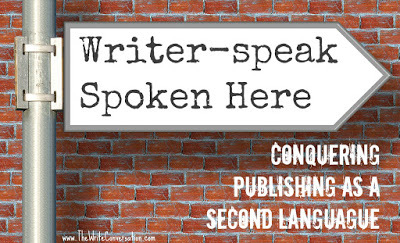 Conquering publishing as a second language!When I first began writing there were times I felt like I was in foreign language class! What did these new words mean?
Conquering publishing as a second language!When I first began writing there were times I felt like I was in foreign language class! What did these new words mean?
Wasn’t a clip something you put in your hair when you were going out? And felt needs? Aren’t all needs felt? What about a slush pile? Things that are slushy aren’t easy to pile up.
And then there was the genre thing. I couldn’t even say that word. Surely, that really was in a foreign language!
That's when I discovered a need to conquer publishing as a second language (PSL). The language of publishing can be learned!True, there is a specific language of the publishing world. But it is not a secret and it is not foreign. You just have to do a little studying. Some of the words are obvious – like simultaneous submission. I could figure out that meant to send things at the same time. But did it mean send the same thing to multiple places or did it mean that I sent multiple submissions on the same day?
The language of publishing can be learned!True, there is a specific language of the publishing world. But it is not a secret and it is not foreign. You just have to do a little studying. Some of the words are obvious – like simultaneous submission. I could figure out that meant to send things at the same time. But did it mean send the same thing to multiple places or did it mean that I sent multiple submissions on the same day?
Here are a few terms that helped me to navigate a little better in the publishing world. BYLINE – Your name as you wish it to appear on your work, usually placed under the title.CLIP – Copies of an author’s published works. Also called tearsheets. The truth is that these days no one really tears anything out of anywhere. You will probably copy and paste your previous work into an electronic file. But you may still hear these words used.FELT NEEDS – Many editors say what they are looking for is a book or article that address felt needs. So, simply put, your work must touch your reader at a point of need.SIMULTANEOUS SUBMISSION – This is usually applied to books. Some people say they use this with magazine articles but I, personally, don’t recommend it. Book publishers usually take several months to reply to your submission. Rightly so, since they must have a number of committees comment. They know that if you wait months for an answer every time you submit a book manuscript, you may take years to find a home for your work. So the publishers are fine with your submitting your book manuscript to more than one publisher as long as you let them know in your query or cover letter that you are sending to more publishing houses than just one. Add a line to your letter such as “this is a simultaneous submission.”SLUSH PILE – The pile on the editor’s desk that has all the submitted manuscripts. Usually this pile is very high so you need to make sure anything you submit is your best writing and well-edited. (I know you thought that’s what editors were for but today’s editorial staffs are very small if not a solo position. So make sure you have done their editing for them (even if you have to hire a freelance editor) so your manuscript will rise to the top of the pile! Hope this helps. We will continue next month as we talk about the difference between a query letter and a cover letter. But in the meantime, be sure to ask any questions about terms you've heard and don't understand.
Don't forget to join the conversation!
TWEETABLES
Conquering PSL (Publishing as a Second Language) - via author @LindaGilden on @EdieMelson (Click to Tweet)
Glimpses from the writer's glossary, learn to speak the language of #writing - @LindaGilden (Click to Tweet)
 Linda Gilden is a wife, mother, and grandmother. She finds great joy in time spent with her family. Her favorite activity is floating in a pool with a good book surrounded by splashing children!
Linda Gilden is a wife, mother, and grandmother. She finds great joy in time spent with her family. Her favorite activity is floating in a pool with a good book surrounded by splashing children!
To find out more about Linda, her writing, and her ministry, visit www.lindagilden.com. You can also connect with her on Twitter @LindaGilden and Facebook at Author Linda Gilden.
 Conquering publishing as a second language!When I first began writing there were times I felt like I was in foreign language class! What did these new words mean?
Conquering publishing as a second language!When I first began writing there were times I felt like I was in foreign language class! What did these new words mean? Wasn’t a clip something you put in your hair when you were going out? And felt needs? Aren’t all needs felt? What about a slush pile? Things that are slushy aren’t easy to pile up.
And then there was the genre thing. I couldn’t even say that word. Surely, that really was in a foreign language!
That's when I discovered a need to conquer publishing as a second language (PSL).
 The language of publishing can be learned!True, there is a specific language of the publishing world. But it is not a secret and it is not foreign. You just have to do a little studying. Some of the words are obvious – like simultaneous submission. I could figure out that meant to send things at the same time. But did it mean send the same thing to multiple places or did it mean that I sent multiple submissions on the same day?
The language of publishing can be learned!True, there is a specific language of the publishing world. But it is not a secret and it is not foreign. You just have to do a little studying. Some of the words are obvious – like simultaneous submission. I could figure out that meant to send things at the same time. But did it mean send the same thing to multiple places or did it mean that I sent multiple submissions on the same day? Here are a few terms that helped me to navigate a little better in the publishing world. BYLINE – Your name as you wish it to appear on your work, usually placed under the title.CLIP – Copies of an author’s published works. Also called tearsheets. The truth is that these days no one really tears anything out of anywhere. You will probably copy and paste your previous work into an electronic file. But you may still hear these words used.FELT NEEDS – Many editors say what they are looking for is a book or article that address felt needs. So, simply put, your work must touch your reader at a point of need.SIMULTANEOUS SUBMISSION – This is usually applied to books. Some people say they use this with magazine articles but I, personally, don’t recommend it. Book publishers usually take several months to reply to your submission. Rightly so, since they must have a number of committees comment. They know that if you wait months for an answer every time you submit a book manuscript, you may take years to find a home for your work. So the publishers are fine with your submitting your book manuscript to more than one publisher as long as you let them know in your query or cover letter that you are sending to more publishing houses than just one. Add a line to your letter such as “this is a simultaneous submission.”SLUSH PILE – The pile on the editor’s desk that has all the submitted manuscripts. Usually this pile is very high so you need to make sure anything you submit is your best writing and well-edited. (I know you thought that’s what editors were for but today’s editorial staffs are very small if not a solo position. So make sure you have done their editing for them (even if you have to hire a freelance editor) so your manuscript will rise to the top of the pile! Hope this helps. We will continue next month as we talk about the difference between a query letter and a cover letter. But in the meantime, be sure to ask any questions about terms you've heard and don't understand.
Don't forget to join the conversation!
TWEETABLES
Conquering PSL (Publishing as a Second Language) - via author @LindaGilden on @EdieMelson (Click to Tweet)
Glimpses from the writer's glossary, learn to speak the language of #writing - @LindaGilden (Click to Tweet)
 Linda Gilden is a wife, mother, and grandmother. She finds great joy in time spent with her family. Her favorite activity is floating in a pool with a good book surrounded by splashing children!
Linda Gilden is a wife, mother, and grandmother. She finds great joy in time spent with her family. Her favorite activity is floating in a pool with a good book surrounded by splashing children!To find out more about Linda, her writing, and her ministry, visit www.lindagilden.com. You can also connect with her on Twitter @LindaGilden and Facebook at Author Linda Gilden.
Published on June 10, 2015 01:00
June 9, 2015
Who Really Sells Your Books?
by Cindy Sproles @CindyDevoted
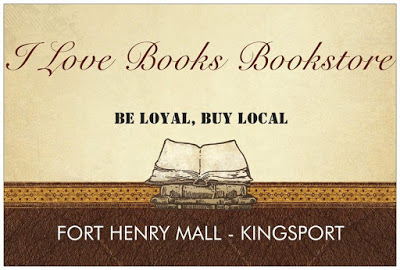 I’ve always been a hometown gal. I buy my groceries at the hometown grocer over the larger superstore and shop at the local small town hardware store, who—by the way knows my name and still says, “Hi, what can we do ya for today? I buy my flowers from the street side plant store, and my veggies at the Farmer’s Market.
I’ve always been a hometown gal. I buy my groceries at the hometown grocer over the larger superstore and shop at the local small town hardware store, who—by the way knows my name and still says, “Hi, what can we do ya for today? I buy my flowers from the street side plant store, and my veggies at the Farmer’s Market.
I love our local small businesses, but when my debut novel hit the shelves, I fell prey to the obvious; the chain stores from the Christian stores to the big boys like Books-A-Million and Barnes & Noble. Not one of them carried my book instore. Needless to say, I was disappointed. My book was, after all, published by a large traditional house. Shouldn’t it be on their shelves?
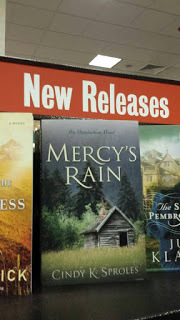 But when a friend approached our local small bookstore and asked if he could get the book, it started a chain of events that I could have never imagined.
But when a friend approached our local small bookstore and asked if he could get the book, it started a chain of events that I could have never imagined.
The retailer ordered seven books—six for my friend and one for himself. Unbeknownst to me, he read the book and then ordered thirty more. He purchased an ad in the local newspaper, called me to come by and sign the books, and when I did, he plopped a sticker on the front that said, “autographed copy.”
I sent him an invitation to my launch party (he was one of 50 invitations) and I anticipated the law of average—one person for every 10 invitations. In the meantime, I visited his store several times as a patron. This store owner placed a 16x20 framed sign of my book cover at the entrance of his store, and strategically placed it on the top shelf of the main shelf.
Before I knew it, my launch party arrived and I sweated the huge cake my husband insisted on ordering, wondering if those five people I anticipated coming could eat such a big cake.
Not only did those five come but ten, fifty, one-hundred, ONE-HUNDRED-FIFTY people passed through my launch party. We obviously beat the law of average – but not by my hand. By the hand of this local retailer.
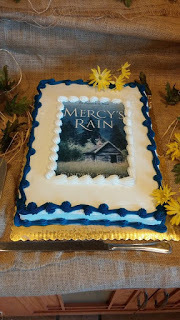 All that to say, had it not been for this wonderful small, local retailer, I’d have carried home a big chunk of cake. This retailer prominently placed my launch invitation on his counter and every time he sold a book, he’d say, “Drop by her launch party and let her add your name inside the book.” And they came.
All that to say, had it not been for this wonderful small, local retailer, I’d have carried home a big chunk of cake. This retailer prominently placed my launch invitation on his counter and every time he sold a book, he’d say, “Drop by her launch party and let her add your name inside the book.” And they came.
As authors we tend to look toward the big chain retailers. It’s our dream for our books to be “out there.” But what does it mean to be “out there” if your books aren’t in the store? Most folks won’t take time to order the book from the chain store then return days later to pick it up. It’s not convenient.
Meet your local retailers. Get to know them. Advertise their store alongside your book. Send them thank you notes, visit them regularly. These people WANT patrons in their stores and they understand the business of selling books. They take the Field of Dreams Approach – “Build it and they will come.” And they do.
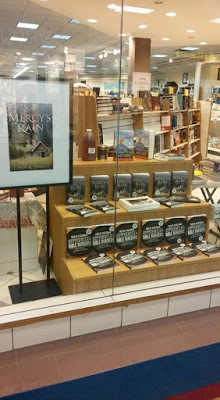 After five months, our I Love Books Bookstore is on the upside of selling nearly 400 copies of Mercy’s Rain. As quickly as he gets the book in the store it’s going right back out in the bags of customers. Mr. Moody’s personal efforts to better his store has given us both success. He continues to run ads in the local paper and make wonderful storefront window displays of Mercy’s Rain. The result. . . he continues to sell books.
After five months, our I Love Books Bookstore is on the upside of selling nearly 400 copies of Mercy’s Rain. As quickly as he gets the book in the store it’s going right back out in the bags of customers. Mr. Moody’s personal efforts to better his store has given us both success. He continues to run ads in the local paper and make wonderful storefront window displays of Mercy’s Rain. The result. . . he continues to sell books.
Perhaps the bigger picture of marketing our books is not the chain stores, but getting back to the one-on-one customer level of the local small retailer. Big is not always better and it’s certainly not the mark of having arrived. Thanks to my local retailer, four months after the release of Mercy’s Rain local buzz is still growing and the novel is circulating our tri-city area. In the words of my local retailer, “I fully expect to sell another 100 books by summer.”
Support your local book retailers and form a partnership that stands firm. A joint effort brings success on many levels.
TWEETABLE
Who really sells your books? Thoughts from author Cindy Sproles, @CindyDevoted (Click to Tweet)
 Cindy Sproles is an author and popular speaker. She is the cofounder of Christian Devotions ministries and managing editor of Straight Street Books and SonRise Devotionals, imprints of Lighthouse Publishing of the Carolinas. Cindy is the executive editor of www.christiandevotions.us and www.inspireafire.com. She teaches at writers conferences nationwide and directs The Asheville Christian Writers Conference - Writers Boot Camp.
Cindy Sproles is an author and popular speaker. She is the cofounder of Christian Devotions ministries and managing editor of Straight Street Books and SonRise Devotionals, imprints of Lighthouse Publishing of the Carolinas. Cindy is the executive editor of www.christiandevotions.us and www.inspireafire.com. She teaches at writers conferences nationwide and directs The Asheville Christian Writers Conference - Writers Boot Camp.
She is the author of two devotionals, He Said, She Said - Learning to Live aLife of Passion and New Sheets - Thirty Days to Refine You into theWoman You Can Be. Cindy's debut fiction novel, Mercy's Rain, is available at major retailers. Visit Cindy at www.cindysproles.com and book her for your next conference or ladies retreat. Also connect with her on Facebook and Twitter.
 I’ve always been a hometown gal. I buy my groceries at the hometown grocer over the larger superstore and shop at the local small town hardware store, who—by the way knows my name and still says, “Hi, what can we do ya for today? I buy my flowers from the street side plant store, and my veggies at the Farmer’s Market.
I’ve always been a hometown gal. I buy my groceries at the hometown grocer over the larger superstore and shop at the local small town hardware store, who—by the way knows my name and still says, “Hi, what can we do ya for today? I buy my flowers from the street side plant store, and my veggies at the Farmer’s Market. I love our local small businesses, but when my debut novel hit the shelves, I fell prey to the obvious; the chain stores from the Christian stores to the big boys like Books-A-Million and Barnes & Noble. Not one of them carried my book instore. Needless to say, I was disappointed. My book was, after all, published by a large traditional house. Shouldn’t it be on their shelves?
 But when a friend approached our local small bookstore and asked if he could get the book, it started a chain of events that I could have never imagined.
But when a friend approached our local small bookstore and asked if he could get the book, it started a chain of events that I could have never imagined.The retailer ordered seven books—six for my friend and one for himself. Unbeknownst to me, he read the book and then ordered thirty more. He purchased an ad in the local newspaper, called me to come by and sign the books, and when I did, he plopped a sticker on the front that said, “autographed copy.”
I sent him an invitation to my launch party (he was one of 50 invitations) and I anticipated the law of average—one person for every 10 invitations. In the meantime, I visited his store several times as a patron. This store owner placed a 16x20 framed sign of my book cover at the entrance of his store, and strategically placed it on the top shelf of the main shelf.
Before I knew it, my launch party arrived and I sweated the huge cake my husband insisted on ordering, wondering if those five people I anticipated coming could eat such a big cake.
Not only did those five come but ten, fifty, one-hundred, ONE-HUNDRED-FIFTY people passed through my launch party. We obviously beat the law of average – but not by my hand. By the hand of this local retailer.
 All that to say, had it not been for this wonderful small, local retailer, I’d have carried home a big chunk of cake. This retailer prominently placed my launch invitation on his counter and every time he sold a book, he’d say, “Drop by her launch party and let her add your name inside the book.” And they came.
All that to say, had it not been for this wonderful small, local retailer, I’d have carried home a big chunk of cake. This retailer prominently placed my launch invitation on his counter and every time he sold a book, he’d say, “Drop by her launch party and let her add your name inside the book.” And they came.As authors we tend to look toward the big chain retailers. It’s our dream for our books to be “out there.” But what does it mean to be “out there” if your books aren’t in the store? Most folks won’t take time to order the book from the chain store then return days later to pick it up. It’s not convenient.
Meet your local retailers. Get to know them. Advertise their store alongside your book. Send them thank you notes, visit them regularly. These people WANT patrons in their stores and they understand the business of selling books. They take the Field of Dreams Approach – “Build it and they will come.” And they do.
 After five months, our I Love Books Bookstore is on the upside of selling nearly 400 copies of Mercy’s Rain. As quickly as he gets the book in the store it’s going right back out in the bags of customers. Mr. Moody’s personal efforts to better his store has given us both success. He continues to run ads in the local paper and make wonderful storefront window displays of Mercy’s Rain. The result. . . he continues to sell books.
After five months, our I Love Books Bookstore is on the upside of selling nearly 400 copies of Mercy’s Rain. As quickly as he gets the book in the store it’s going right back out in the bags of customers. Mr. Moody’s personal efforts to better his store has given us both success. He continues to run ads in the local paper and make wonderful storefront window displays of Mercy’s Rain. The result. . . he continues to sell books. Perhaps the bigger picture of marketing our books is not the chain stores, but getting back to the one-on-one customer level of the local small retailer. Big is not always better and it’s certainly not the mark of having arrived. Thanks to my local retailer, four months after the release of Mercy’s Rain local buzz is still growing and the novel is circulating our tri-city area. In the words of my local retailer, “I fully expect to sell another 100 books by summer.”
Support your local book retailers and form a partnership that stands firm. A joint effort brings success on many levels.
TWEETABLE
Who really sells your books? Thoughts from author Cindy Sproles, @CindyDevoted (Click to Tweet)
 Cindy Sproles is an author and popular speaker. She is the cofounder of Christian Devotions ministries and managing editor of Straight Street Books and SonRise Devotionals, imprints of Lighthouse Publishing of the Carolinas. Cindy is the executive editor of www.christiandevotions.us and www.inspireafire.com. She teaches at writers conferences nationwide and directs The Asheville Christian Writers Conference - Writers Boot Camp.
Cindy Sproles is an author and popular speaker. She is the cofounder of Christian Devotions ministries and managing editor of Straight Street Books and SonRise Devotionals, imprints of Lighthouse Publishing of the Carolinas. Cindy is the executive editor of www.christiandevotions.us and www.inspireafire.com. She teaches at writers conferences nationwide and directs The Asheville Christian Writers Conference - Writers Boot Camp. She is the author of two devotionals, He Said, She Said - Learning to Live aLife of Passion and New Sheets - Thirty Days to Refine You into theWoman You Can Be. Cindy's debut fiction novel, Mercy's Rain, is available at major retailers. Visit Cindy at www.cindysproles.com and book her for your next conference or ladies retreat. Also connect with her on Facebook and Twitter.
Published on June 09, 2015 01:00
June 8, 2015
Social Media Basics for Writers, Part II—When Should a Writer Start Building a Social Media Network?
by Edie Melson@EdieMelson
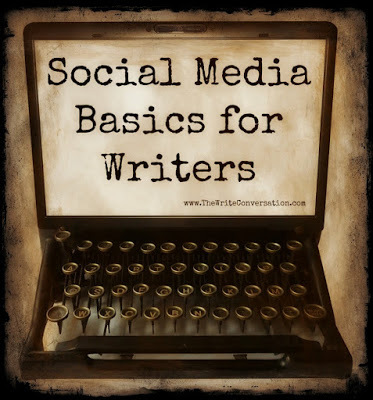 Over and over, I’ve been asked when a writer should get active on social media. And the answer surprises many.
Over and over, I’ve been asked when a writer should get active on social media. And the answer surprises many.
The truth is, you need to have a solid social media platform BEFORE you ever get published.
If you wait until you get a contract, you're already way behind.
But what's involved in building a social media network? Today I'll lay it all out and give you the basics.
Platform Building BasicsTo have a strong online platform, we have to first have a solid foundation. I teach (and used this to grow my own platform) that to have an effective social media presence on the Internet you need to do three things: Facebook, Twitter, and Blogging. The reason you must use Facebook and Twitter is because, no matter what or who you’re promoting, you’ll find almost 100% of your audience on these two networks. There may come a time, especially with Pinterest and Google+, that this changes. But it hasn’t happened yet.
You also need to be blogging someplace regularly. Notice I did NOT say you have to have a blog. I said you have to blogging somewhere, regularly. It could be a group blog or professional blog where you have a regular column. The idea is to have somewhere to send your audience so they can interact with you on a deeper level than social media. Think of it as a place to sit down and have coffee, to get to know each other better.
Another thing that I see again and again is that writers don’t know how to make their separate social media networks work together. Today I’m going to give you some tips for that.
Keep Your Social Media Identity ConsistentAs writers in today’s digital world, we all know the importance of having an online presence. The savvy writer works hard to leverage social media to do everything from building a platform to interacting with readers.
Even armed with the knowledge of how important engaging online is, many authors have missed one vital component.
Consistency.
So today I’m sharing 5 simple things you can to do keep your social media identity consistent.
Does it really matter that I seem like one person on Facebook and another on Twitter? To a certain degree, it definitely does. While interaction styles do vary from network to network, our audience will still expect us to be recognizable. Think about it from this perspective. Do you really trust someone who is drastically different from situation to situation? I don’t. The same thing holds true with your social media personality. It needs to ring true, no matter where you audience finds you.
So now we know that we need to have a certain level of consistency, what exactly does that entail. Here’s my list of 5 things that will help you build the trust of your audience, while still interacting normally on a given network.
 1. Keep your profile photo consistent (and a picture of you – NOTHING else). I’m always amazed at writers who want to build an online presence, but don’t have a picture of themselves on their social media sites. People don’t engage with cartoons and other pictures. They are looking for someone to trust. And even though I love kids, it’s you I’m interested in, not your kids or your grandkids.
1. Keep your profile photo consistent (and a picture of you – NOTHING else). I’m always amazed at writers who want to build an online presence, but don’t have a picture of themselves on their social media sites. People don’t engage with cartoons and other pictures. They are looking for someone to trust. And even though I love kids, it’s you I’m interested in, not your kids or your grandkids.
As far as the picture you use of yourself on social media, it doesn’t have to be the exact same picture, but it better be pretty close. I can’t tell you how many times I’ve tried to find someone on Twitter by looking at their Facebook photo as a reference and missing them entirely. I have several different photos I use for profile pictures. They were all taken around the same time and are a large enough shot of my face, that people can tell who I am.
2. Write your updates like you talk. If you’re trying to be something you’re not, or present yourself in a way that’s not natural, it will show.
 3. Be consistent with how often you post updates. Today’s audience has a short attention span and even shorter memory. To build a consistent picture of yourself online, you have to be online often enough for people to remember you. What does consistent look like? It varies from person to person, but I would say, at least a couple of updates a day, per network, four or five times a week. This is different from growing your platform, this is just to remain in the short term memory of your audience.
3. Be consistent with how often you post updates. Today’s audience has a short attention span and even shorter memory. To build a consistent picture of yourself online, you have to be online often enough for people to remember you. What does consistent look like? It varies from person to person, but I would say, at least a couple of updates a day, per network, four or five times a week. This is different from growing your platform, this is just to remain in the short term memory of your audience.
4. Don’t change the basis of your message from network to network. For example, if your online identity is built on being a YA author on Twitter, don’t make narrative nonfiction the basis of your posts on Facebook. Let the independent networks work together to paint a more complete picture of who you are. Don’t be an alligator on one and a fuzzy bunny on another.
5. Keep your online information current. If you update your Facebook bio because you’ve signed a new contract, don’t neglect your Twitter or LinkedIn bio. And don’t neglect the bio section of any social media network. This is valuable real estate and should not be wasted.
Now it's time for me to stop talking and begin answering your questions. What have you found is working for you and what are the areas where you struggle? Be sure to share your thoughts in the comments section below.
Don't forget to join the conversation!
Blessings,
Edie
TWEETABLES
When should a writer start building a #SocialMedia network? - answers from expert @EdieMelson (Click to Tweet)
Waiting until you have a contract to build a #SocialMedia network is too late - via @EdieMelson (Click to Tweet)
 Over and over, I’ve been asked when a writer should get active on social media. And the answer surprises many.
Over and over, I’ve been asked when a writer should get active on social media. And the answer surprises many. The truth is, you need to have a solid social media platform BEFORE you ever get published.
If you wait until you get a contract, you're already way behind.
But what's involved in building a social media network? Today I'll lay it all out and give you the basics.
Platform Building BasicsTo have a strong online platform, we have to first have a solid foundation. I teach (and used this to grow my own platform) that to have an effective social media presence on the Internet you need to do three things: Facebook, Twitter, and Blogging. The reason you must use Facebook and Twitter is because, no matter what or who you’re promoting, you’ll find almost 100% of your audience on these two networks. There may come a time, especially with Pinterest and Google+, that this changes. But it hasn’t happened yet.
You also need to be blogging someplace regularly. Notice I did NOT say you have to have a blog. I said you have to blogging somewhere, regularly. It could be a group blog or professional blog where you have a regular column. The idea is to have somewhere to send your audience so they can interact with you on a deeper level than social media. Think of it as a place to sit down and have coffee, to get to know each other better.
Another thing that I see again and again is that writers don’t know how to make their separate social media networks work together. Today I’m going to give you some tips for that.
Keep Your Social Media Identity ConsistentAs writers in today’s digital world, we all know the importance of having an online presence. The savvy writer works hard to leverage social media to do everything from building a platform to interacting with readers.
Even armed with the knowledge of how important engaging online is, many authors have missed one vital component.
Consistency.
So today I’m sharing 5 simple things you can to do keep your social media identity consistent.
Does it really matter that I seem like one person on Facebook and another on Twitter? To a certain degree, it definitely does. While interaction styles do vary from network to network, our audience will still expect us to be recognizable. Think about it from this perspective. Do you really trust someone who is drastically different from situation to situation? I don’t. The same thing holds true with your social media personality. It needs to ring true, no matter where you audience finds you.
So now we know that we need to have a certain level of consistency, what exactly does that entail. Here’s my list of 5 things that will help you build the trust of your audience, while still interacting normally on a given network.
 1. Keep your profile photo consistent (and a picture of you – NOTHING else). I’m always amazed at writers who want to build an online presence, but don’t have a picture of themselves on their social media sites. People don’t engage with cartoons and other pictures. They are looking for someone to trust. And even though I love kids, it’s you I’m interested in, not your kids or your grandkids.
1. Keep your profile photo consistent (and a picture of you – NOTHING else). I’m always amazed at writers who want to build an online presence, but don’t have a picture of themselves on their social media sites. People don’t engage with cartoons and other pictures. They are looking for someone to trust. And even though I love kids, it’s you I’m interested in, not your kids or your grandkids.As far as the picture you use of yourself on social media, it doesn’t have to be the exact same picture, but it better be pretty close. I can’t tell you how many times I’ve tried to find someone on Twitter by looking at their Facebook photo as a reference and missing them entirely. I have several different photos I use for profile pictures. They were all taken around the same time and are a large enough shot of my face, that people can tell who I am.
2. Write your updates like you talk. If you’re trying to be something you’re not, or present yourself in a way that’s not natural, it will show.
 3. Be consistent with how often you post updates. Today’s audience has a short attention span and even shorter memory. To build a consistent picture of yourself online, you have to be online often enough for people to remember you. What does consistent look like? It varies from person to person, but I would say, at least a couple of updates a day, per network, four or five times a week. This is different from growing your platform, this is just to remain in the short term memory of your audience.
3. Be consistent with how often you post updates. Today’s audience has a short attention span and even shorter memory. To build a consistent picture of yourself online, you have to be online often enough for people to remember you. What does consistent look like? It varies from person to person, but I would say, at least a couple of updates a day, per network, four or five times a week. This is different from growing your platform, this is just to remain in the short term memory of your audience.4. Don’t change the basis of your message from network to network. For example, if your online identity is built on being a YA author on Twitter, don’t make narrative nonfiction the basis of your posts on Facebook. Let the independent networks work together to paint a more complete picture of who you are. Don’t be an alligator on one and a fuzzy bunny on another.
5. Keep your online information current. If you update your Facebook bio because you’ve signed a new contract, don’t neglect your Twitter or LinkedIn bio. And don’t neglect the bio section of any social media network. This is valuable real estate and should not be wasted.
Now it's time for me to stop talking and begin answering your questions. What have you found is working for you and what are the areas where you struggle? Be sure to share your thoughts in the comments section below.
Don't forget to join the conversation!
Blessings,
Edie
TWEETABLES
When should a writer start building a #SocialMedia network? - answers from expert @EdieMelson (Click to Tweet)
Waiting until you have a contract to build a #SocialMedia network is too late - via @EdieMelson (Click to Tweet)
Published on June 08, 2015 01:00
June 7, 2015
What is Blossoming in Your Sound Garden?
Pleasant words are a honeycomb, Sweet to the soul and healing to the bones. Proverbs 16:24
 What's blossoming in your sound garden?As a writer, words are my lifeline. I spend hours with them. As I put them on paper, they help me bring order out of the chaos that is life. I use them to bless, to inform, and to challenge. At times it seems that the tapping of my fingers on the keys of my computer echo the heartbeat of my soul.
What's blossoming in your sound garden?As a writer, words are my lifeline. I spend hours with them. As I put them on paper, they help me bring order out of the chaos that is life. I use them to bless, to inform, and to challenge. At times it seems that the tapping of my fingers on the keys of my computer echo the heartbeat of my soul.
Words have a way of hanging around. The things spoken or read linger in our minds and our hearts, stirred by the experiences of life. These words can bring hope, lifting our spirits when times are tough.
But words don’t always heal, they can also wound.
Like most of you reading this, I’ve been the victim of those debilitating words. I still bear the scars of things said.
Lately, I’ve become more deliberate about the words that I allow to take up residence in my mind. But some of those negative words are like weeds, with deep roots that are hard to get rid of.
Of course, reading scripture is my first line of defense against the negative messages that try to burrow deep in my mind. But in addition, I've found that I also need to hear the encouraging words of others. Spoken words carry such power.
I'm blessed to be part of a group of women who meet together weekly at a local coffee shop. We pray for each other, we encourage each other and we help each other process life. It’s the words we share that have begun to blossom in my life, choking out the weeds.
These women are quick to praise, and just as quick to point out the truth in any given situation. Their words—to me specifically and to others in the group—are like seeds planted in my heart. As time goes by, those words have taken root and grown, surrounding me with an incredible sound garden. They remind me that God speaks to us in many ways and through many people.
My soul echoes with the whispers of words of Bible verses shared, encouragement given during difficult times, and always truth spoken in love. The sweet scent of the words shared in this group are a healing aroma to my soul. And their blossoms are so abundant I've been able to share them with others.
Now something for you to consider. What are the words echoing in your soul? Today resolve to become more deliberate about what’s blossoming in your sound garden.
 What's blossoming in your sound garden?As a writer, words are my lifeline. I spend hours with them. As I put them on paper, they help me bring order out of the chaos that is life. I use them to bless, to inform, and to challenge. At times it seems that the tapping of my fingers on the keys of my computer echo the heartbeat of my soul.
What's blossoming in your sound garden?As a writer, words are my lifeline. I spend hours with them. As I put them on paper, they help me bring order out of the chaos that is life. I use them to bless, to inform, and to challenge. At times it seems that the tapping of my fingers on the keys of my computer echo the heartbeat of my soul.Words have a way of hanging around. The things spoken or read linger in our minds and our hearts, stirred by the experiences of life. These words can bring hope, lifting our spirits when times are tough.
But words don’t always heal, they can also wound.
Like most of you reading this, I’ve been the victim of those debilitating words. I still bear the scars of things said.
Lately, I’ve become more deliberate about the words that I allow to take up residence in my mind. But some of those negative words are like weeds, with deep roots that are hard to get rid of.
Of course, reading scripture is my first line of defense against the negative messages that try to burrow deep in my mind. But in addition, I've found that I also need to hear the encouraging words of others. Spoken words carry such power.
I'm blessed to be part of a group of women who meet together weekly at a local coffee shop. We pray for each other, we encourage each other and we help each other process life. It’s the words we share that have begun to blossom in my life, choking out the weeds.
These women are quick to praise, and just as quick to point out the truth in any given situation. Their words—to me specifically and to others in the group—are like seeds planted in my heart. As time goes by, those words have taken root and grown, surrounding me with an incredible sound garden. They remind me that God speaks to us in many ways and through many people.
My soul echoes with the whispers of words of Bible verses shared, encouragement given during difficult times, and always truth spoken in love. The sweet scent of the words shared in this group are a healing aroma to my soul. And their blossoms are so abundant I've been able to share them with others.
Now something for you to consider. What are the words echoing in your soul? Today resolve to become more deliberate about what’s blossoming in your sound garden.
Published on June 07, 2015 01:00
June 5, 2015
Inviting Your Creative Self On A Date
by Cathy Baker @CathySBaker
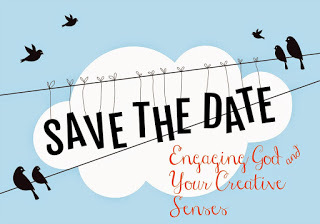 Engaging God & your creative senses!Your creative energy called. Yet the only thing it heard on the receiving end was a busy signal:
Engaging God & your creative senses!Your creative energy called. Yet the only thing it heard on the receiving end was a busy signal:
Beep. (My schedule is packed.)Beep. (I'm not a creative person.)Beep. (Who has the energy for creativity?)
No wonder it feels a bit neglected, even forgotten. It's time to take the artist within on a date.
The Artist Dateis a basic tool of The Artist's Way by Julia Cameron. She asks her students to undertake one Artist Date per week.
"I tell students to seek mystery, not mastery on their dates. I urge them to explore with childlike wonder rather than adult intellect. Artist Dates are intended to be fun." - Julia Cameron
If at this point you're asking why you should continue reading this post, remember: in whatever way(s) our Creator gifted you, there is a place for creativity...for He is most creative of all.
 Invite your creative self on a date.Save the DateThe first Artist Date Julia proposes is this: go to a park. "A park is a very concentrated dose of beauty. Note the plantings carefully plotted out. Note the diversity of the vegetation. You may wish to carry a camera. Record your favorite sight. Allow yourself to dawdle. Soak in the season. Give yourself at least an hour. Scoop up a pine cone. Fill your pockets with acorns. Feel your mind unkinking. Say hello to your soul."
Invite your creative self on a date.Save the DateThe first Artist Date Julia proposes is this: go to a park. "A park is a very concentrated dose of beauty. Note the plantings carefully plotted out. Note the diversity of the vegetation. You may wish to carry a camera. Record your favorite sight. Allow yourself to dawdle. Soak in the season. Give yourself at least an hour. Scoop up a pine cone. Fill your pockets with acorns. Feel your mind unkinking. Say hello to your soul."
You're Invited What nearby park would be the perfect place for your first Artist Date?
"Art is an image-using system," I tell students. "Imagine yourself as having an inner trout pond filled with images. When you use your creativity, you are drawing from this inner pond. When you draw on it heavily, you will over-fish your pond. Images will be harder and harder to come by unless you begin to consciously replenish your store of images. Taking your Artist Date replenishes your pond." - Julia Cameron
Now it's your turn, where would you go for a date with your creative self? Be sure to leave your thoughts in the comments section below.
Don't forget to join the conversation!
TWEETABLES
Inviting Your Creative Self on a Date can be just the Inspiration needed - @CathySBaker on @EdieMelson (Click to Tweet)
Jump start your creativity - Try a date with yourself - via @CathySBaker on @EdieMelson (Click to Tweet)
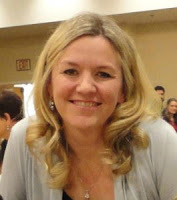 Cathy Baker is an award-winning writer who delights in observing God at work in the nuances of life. Her work has been published in
Chicken Soup for the Soul
,
Upper Room
, Focus on the Family’s
Thriving Family
, etc. Her award-winning poetry has appeared in two anthologies. She is also a regular contributor to Inspire A Fire and a member of Cross N Pens, as well as the Light Brigade. With four grandchildren, a mustached-laden husband, a spoiled pooch named Rupert, and a 1963 Shasta Airflyte called Buttercup, she considers life to be quite the adventure. Email Cathy or visit her at www.cathybaker.org. You can also connect with her on Twitter and Facebook.
Cathy Baker is an award-winning writer who delights in observing God at work in the nuances of life. Her work has been published in
Chicken Soup for the Soul
,
Upper Room
, Focus on the Family’s
Thriving Family
, etc. Her award-winning poetry has appeared in two anthologies. She is also a regular contributor to Inspire A Fire and a member of Cross N Pens, as well as the Light Brigade. With four grandchildren, a mustached-laden husband, a spoiled pooch named Rupert, and a 1963 Shasta Airflyte called Buttercup, she considers life to be quite the adventure. Email Cathy or visit her at www.cathybaker.org. You can also connect with her on Twitter and Facebook.
 Engaging God & your creative senses!Your creative energy called. Yet the only thing it heard on the receiving end was a busy signal:
Engaging God & your creative senses!Your creative energy called. Yet the only thing it heard on the receiving end was a busy signal: Beep. (My schedule is packed.)Beep. (I'm not a creative person.)Beep. (Who has the energy for creativity?)
No wonder it feels a bit neglected, even forgotten. It's time to take the artist within on a date.
The Artist Dateis a basic tool of The Artist's Way by Julia Cameron. She asks her students to undertake one Artist Date per week.
"I tell students to seek mystery, not mastery on their dates. I urge them to explore with childlike wonder rather than adult intellect. Artist Dates are intended to be fun." - Julia Cameron
If at this point you're asking why you should continue reading this post, remember: in whatever way(s) our Creator gifted you, there is a place for creativity...for He is most creative of all.
 Invite your creative self on a date.Save the DateThe first Artist Date Julia proposes is this: go to a park. "A park is a very concentrated dose of beauty. Note the plantings carefully plotted out. Note the diversity of the vegetation. You may wish to carry a camera. Record your favorite sight. Allow yourself to dawdle. Soak in the season. Give yourself at least an hour. Scoop up a pine cone. Fill your pockets with acorns. Feel your mind unkinking. Say hello to your soul."
Invite your creative self on a date.Save the DateThe first Artist Date Julia proposes is this: go to a park. "A park is a very concentrated dose of beauty. Note the plantings carefully plotted out. Note the diversity of the vegetation. You may wish to carry a camera. Record your favorite sight. Allow yourself to dawdle. Soak in the season. Give yourself at least an hour. Scoop up a pine cone. Fill your pockets with acorns. Feel your mind unkinking. Say hello to your soul." You're Invited What nearby park would be the perfect place for your first Artist Date?
"Art is an image-using system," I tell students. "Imagine yourself as having an inner trout pond filled with images. When you use your creativity, you are drawing from this inner pond. When you draw on it heavily, you will over-fish your pond. Images will be harder and harder to come by unless you begin to consciously replenish your store of images. Taking your Artist Date replenishes your pond." - Julia Cameron
Now it's your turn, where would you go for a date with your creative self? Be sure to leave your thoughts in the comments section below.
Don't forget to join the conversation!
TWEETABLES
Inviting Your Creative Self on a Date can be just the Inspiration needed - @CathySBaker on @EdieMelson (Click to Tweet)
Jump start your creativity - Try a date with yourself - via @CathySBaker on @EdieMelson (Click to Tweet)
 Cathy Baker is an award-winning writer who delights in observing God at work in the nuances of life. Her work has been published in
Chicken Soup for the Soul
,
Upper Room
, Focus on the Family’s
Thriving Family
, etc. Her award-winning poetry has appeared in two anthologies. She is also a regular contributor to Inspire A Fire and a member of Cross N Pens, as well as the Light Brigade. With four grandchildren, a mustached-laden husband, a spoiled pooch named Rupert, and a 1963 Shasta Airflyte called Buttercup, she considers life to be quite the adventure. Email Cathy or visit her at www.cathybaker.org. You can also connect with her on Twitter and Facebook.
Cathy Baker is an award-winning writer who delights in observing God at work in the nuances of life. Her work has been published in
Chicken Soup for the Soul
,
Upper Room
, Focus on the Family’s
Thriving Family
, etc. Her award-winning poetry has appeared in two anthologies. She is also a regular contributor to Inspire A Fire and a member of Cross N Pens, as well as the Light Brigade. With four grandchildren, a mustached-laden husband, a spoiled pooch named Rupert, and a 1963 Shasta Airflyte called Buttercup, she considers life to be quite the adventure. Email Cathy or visit her at www.cathybaker.org. You can also connect with her on Twitter and Facebook.
Published on June 05, 2015 01:00
June 4, 2015
10 Reasons to Consider Writing Category Romance
by Lynn Blackburn @LynnHBlackburn
 When the idea of trying to sell my book started floating around in my brain, I always pictured it in Barnes & Noble. It would be on an upper shelf on the inspirational aisle.
When the idea of trying to sell my book started floating around in my brain, I always pictured it in Barnes & Noble. It would be on an upper shelf on the inspirational aisle.
It would fit right in with books from my favorite romantic suspense authors—Eason, Mills, Hannon, Pettrey, Henderson—and, of course, it would sell a million copies in the first week. I’m kidding. Kinda.
Here’s what I did not picture.I did not picture my first book not being much bigger than an iPhone 6. (I recently handed it to a friend who turned it over a few times and exclaimed, “It’s so dainty!”)
I did not picture it under the Harlequin banner at Wal-mart. (I wrote a post about this on my blog yesterday. Spoiler: Harlequin does not equal smut.)
The truth is that category romance wasn’t even on my radar. Then I learned a thing or two about publishing and a whole lot about category romance.
 Turns out a lot of publishers are hesitant to take chances on debut authors. All the advice says you need a killer story, a slick proposal, a top-tier agent, and then…well, then you get to pray hard for a few years while you wait to see if an editor will champion your story and a pub-board will pick it up. There are only so many slots on publishers’ lists for each genre, and if they have a choice between “Unknown” Author and “Hits It Out of the Park Every Time” Author, who do you think they are going to choose?
Turns out a lot of publishers are hesitant to take chances on debut authors. All the advice says you need a killer story, a slick proposal, a top-tier agent, and then…well, then you get to pray hard for a few years while you wait to see if an editor will champion your story and a pub-board will pick it up. There are only so many slots on publishers’ lists for each genre, and if they have a choice between “Unknown” Author and “Hits It Out of the Park Every Time” Author, who do you think they are going to choose?
Does it ever happen? Of course it does.
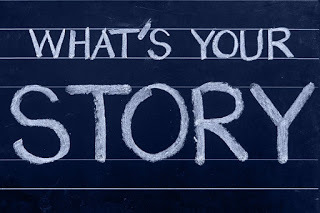 But I’m a numbers girl (I was an engineer in my former life) and it didn’t require much market analysis to determine that the odds were not in my favor.
But I’m a numbers girl (I was an engineer in my former life) and it didn’t require much market analysis to determine that the odds were not in my favor.
So what’s an aspiring romance author to do?If you haven’t already, it’s time to consider category romance.
Here’s why:They publish a LOT of books a year. Love Inspired and Love Inspired Suspense both publish 6 books a month. That’s 72 books a year. Love Inspired Historical publishes 48 a year. Even their most prolific authors can’t keep up with that level of demand.They are eager to find debut authors. They frequently have contests to bring new authors in and they are always open to submissions through regular channels. (Those submissions do not require an agent).Editors are willing to provide feedback on stories that aren’t quite there. It’s called a “revise and resubmit” letter and I’ve never heard of anyone else doing it.The editors are gracious to new authors.I was TERRIFIED of my editor, for no reason other than that she is an editor and she had my precious baby in her hands. She turned out to be awesome. She also likes Firefly, which was an unexpected perk.The Love Inspired lines offer a book club. No one has ever heard of you? No problem. Your book arrives in their mailbox, they read it, they love it. NOW they’ve heard of you!Category romance sells. Have you looked at the numbers for how many books a debut author sells? I don’t recommend it unless you have a stash of chocolate nearby. But category romance sells well and even debut authors can expect their books to find their way to thousands of readers.Writing category romance requires real skill. Don’t believe me? If you think writing a shorter novel is “easy” because of the word count, think again. You have 55,000 words to develop your characters, tell a compelling story, and weave together the romance, suspense, and spiritual threads. It brings whole new meaning to the idea of “writing tight.”It’s a great place to make a career. If you want to write category forever, you’ll find yourself in a wonderful community of supportive authors, encouraging editors, and devoted readers.It’s a great place to jump off from. If you decide to pitch a trade length novel, you’ll have proof that you can finish stories, meet your deadlines, and please your readers. Many romance authors who frequent the CBA bestseller list started their career with category romance.The books are good! Strong characters, edge of your seat plots, happily-ever-afters. What’s not to love? If you haven’t read one lately, I’ve got one I’d be happy to recommend!
So how about it? Are you a romance writer? Ever thought about writing for one of the category lines? Why or why not? Be sure to share your thoughts below.
Don’t forget to join the conversation!
TWEETABLES10 Reasons to Consider #Writing Category Romance - via @LynnHBlackburn on @EdieMelson (Click to Tweet)
Frustrated by the lack of traditional publishing options? @LynnHBlackburn has a suggestion (Click to Tweet)
(Special thanks to Love Inspired Suspense authors Dana R. Lynn and Michelle Karlfor their input to this post!)
 Lynn Huggins Blackburn believes in the power of stories, especially those that remind us that true love exists, a gift from the Truest Love. She’s passionate about CrossFit, coffee, and chocolate (don’t make her choose) and experimenting with recipes that feed both body and soul. She lives in South Carolina with her true love, Brian, and their three children. You can follow her real life happily ever after at http://www.lynnhugginsblackburn.com.
Lynn Huggins Blackburn believes in the power of stories, especially those that remind us that true love exists, a gift from the Truest Love. She’s passionate about CrossFit, coffee, and chocolate (don’t make her choose) and experimenting with recipes that feed both body and soul. She lives in South Carolina with her true love, Brian, and their three children. You can follow her real life happily ever after at http://www.lynnhugginsblackburn.com.
 When the idea of trying to sell my book started floating around in my brain, I always pictured it in Barnes & Noble. It would be on an upper shelf on the inspirational aisle.
When the idea of trying to sell my book started floating around in my brain, I always pictured it in Barnes & Noble. It would be on an upper shelf on the inspirational aisle.It would fit right in with books from my favorite romantic suspense authors—Eason, Mills, Hannon, Pettrey, Henderson—and, of course, it would sell a million copies in the first week. I’m kidding. Kinda.
Here’s what I did not picture.I did not picture my first book not being much bigger than an iPhone 6. (I recently handed it to a friend who turned it over a few times and exclaimed, “It’s so dainty!”)
I did not picture it under the Harlequin banner at Wal-mart. (I wrote a post about this on my blog yesterday. Spoiler: Harlequin does not equal smut.)
The truth is that category romance wasn’t even on my radar. Then I learned a thing or two about publishing and a whole lot about category romance.
 Turns out a lot of publishers are hesitant to take chances on debut authors. All the advice says you need a killer story, a slick proposal, a top-tier agent, and then…well, then you get to pray hard for a few years while you wait to see if an editor will champion your story and a pub-board will pick it up. There are only so many slots on publishers’ lists for each genre, and if they have a choice between “Unknown” Author and “Hits It Out of the Park Every Time” Author, who do you think they are going to choose?
Turns out a lot of publishers are hesitant to take chances on debut authors. All the advice says you need a killer story, a slick proposal, a top-tier agent, and then…well, then you get to pray hard for a few years while you wait to see if an editor will champion your story and a pub-board will pick it up. There are only so many slots on publishers’ lists for each genre, and if they have a choice between “Unknown” Author and “Hits It Out of the Park Every Time” Author, who do you think they are going to choose?Does it ever happen? Of course it does.
 But I’m a numbers girl (I was an engineer in my former life) and it didn’t require much market analysis to determine that the odds were not in my favor.
But I’m a numbers girl (I was an engineer in my former life) and it didn’t require much market analysis to determine that the odds were not in my favor.So what’s an aspiring romance author to do?If you haven’t already, it’s time to consider category romance.
Here’s why:They publish a LOT of books a year. Love Inspired and Love Inspired Suspense both publish 6 books a month. That’s 72 books a year. Love Inspired Historical publishes 48 a year. Even their most prolific authors can’t keep up with that level of demand.They are eager to find debut authors. They frequently have contests to bring new authors in and they are always open to submissions through regular channels. (Those submissions do not require an agent).Editors are willing to provide feedback on stories that aren’t quite there. It’s called a “revise and resubmit” letter and I’ve never heard of anyone else doing it.The editors are gracious to new authors.I was TERRIFIED of my editor, for no reason other than that she is an editor and she had my precious baby in her hands. She turned out to be awesome. She also likes Firefly, which was an unexpected perk.The Love Inspired lines offer a book club. No one has ever heard of you? No problem. Your book arrives in their mailbox, they read it, they love it. NOW they’ve heard of you!Category romance sells. Have you looked at the numbers for how many books a debut author sells? I don’t recommend it unless you have a stash of chocolate nearby. But category romance sells well and even debut authors can expect their books to find their way to thousands of readers.Writing category romance requires real skill. Don’t believe me? If you think writing a shorter novel is “easy” because of the word count, think again. You have 55,000 words to develop your characters, tell a compelling story, and weave together the romance, suspense, and spiritual threads. It brings whole new meaning to the idea of “writing tight.”It’s a great place to make a career. If you want to write category forever, you’ll find yourself in a wonderful community of supportive authors, encouraging editors, and devoted readers.It’s a great place to jump off from. If you decide to pitch a trade length novel, you’ll have proof that you can finish stories, meet your deadlines, and please your readers. Many romance authors who frequent the CBA bestseller list started their career with category romance.The books are good! Strong characters, edge of your seat plots, happily-ever-afters. What’s not to love? If you haven’t read one lately, I’ve got one I’d be happy to recommend!
So how about it? Are you a romance writer? Ever thought about writing for one of the category lines? Why or why not? Be sure to share your thoughts below.
Don’t forget to join the conversation!
TWEETABLES10 Reasons to Consider #Writing Category Romance - via @LynnHBlackburn on @EdieMelson (Click to Tweet)
Frustrated by the lack of traditional publishing options? @LynnHBlackburn has a suggestion (Click to Tweet)
(Special thanks to Love Inspired Suspense authors Dana R. Lynn and Michelle Karlfor their input to this post!)
 Lynn Huggins Blackburn believes in the power of stories, especially those that remind us that true love exists, a gift from the Truest Love. She’s passionate about CrossFit, coffee, and chocolate (don’t make her choose) and experimenting with recipes that feed both body and soul. She lives in South Carolina with her true love, Brian, and their three children. You can follow her real life happily ever after at http://www.lynnhugginsblackburn.com.
Lynn Huggins Blackburn believes in the power of stories, especially those that remind us that true love exists, a gift from the Truest Love. She’s passionate about CrossFit, coffee, and chocolate (don’t make her choose) and experimenting with recipes that feed both body and soul. She lives in South Carolina with her true love, Brian, and their three children. You can follow her real life happily ever after at http://www.lynnhugginsblackburn.com.
Published on June 04, 2015 01:00
June 3, 2015
The Push We Need to Move Forward with Our Writing
by Mary Denman @MaryDenman
 It's hard to release our writing to the world.It can be hard to release our writing to the world.
It's hard to release our writing to the world.It can be hard to release our writing to the world.
Recently, I released my baby to an agent. Not one of my children, mind you. But my other baby.
My first novel.
The one crafted several years ago.
The one that was put on hold while homeschooling my five kids.
The one that was keeping me from moving forward.
The one I knew needed work, but wasn’t quite sure where to go with it.
Once I realized I couldn’t do other projects until I knew whether to dig in or walk away, I understood I needed feedback. I truly wanted honest feedback. Someone who knew nothing of my story needed to read it. To tell me where the strengths and weaknesses were.
And I got it!
My novel isn’t ready for publication.
My reaction? Oddly enough, was just plain relief.
No feeling like a failure. No feeling of rejection. No tears of sorrow. No offense taken at the honest response.
 Honest feedback and even bad news doesn't
Honest feedback and even bad news doesn't
have to derail our writing.If I’d gotten the exact same feedback a few years ago, I’d probably have done all of the above. But because I’ve been blogging and writing for so long now, the feedback hasn’t derailed me. I can see it for what it is. It’s honest. And it’s spot on.
You see, I knew the story had issues.
Don’t get me wrong. There’s plenty of good writing in there.
Yet, the tension was off in a couple of places. I just couldn’t put my finger on what that was or how to fix it. Then I wondered if I could fix it. Or if I should even try to fix it.
Now I know.
With help from my great critique buddies, I can do this.
But I’m not going to. Not now anyway. My heart isn’t in it.
Again, don’t get me wrong. I love my characters. I don’t want to leave them. They mean a lot to me. Readers agree the hero and heroine have great chemistry.
 Sometimes we can't the forest for the trees.But I can’t see the forest for the trees. To truly make this novel work, I’d probably have to write lots of chapters for the beginning of the book. From scratch. Again, that’s not what it seems. I LOVE writing new chapters. But writing new chapters for an existing book and making sure they all fit in with what’s already written is very challenging for me. That’s where the trees get in the way.
Sometimes we can't the forest for the trees.But I can’t see the forest for the trees. To truly make this novel work, I’d probably have to write lots of chapters for the beginning of the book. From scratch. Again, that’s not what it seems. I LOVE writing new chapters. But writing new chapters for an existing book and making sure they all fit in with what’s already written is very challenging for me. That’s where the trees get in the way.
Because I originally wrote this book so long ago, I know I’ve grown greatly as a writer. But this draft is entrenched in my head.
 We all need perspective.So, I’ve got to purposely leave the trees and the forest for a while. I need perspective. I need to climb high enough up the mountainside to be able to look back down on the woods and see what they look like from above. To see where the river flows. To see where the nearly impassible parts are. To figure out how my characters are supposed to get from one end of the forest to the other without dying or losing their way.
We all need perspective.So, I’ve got to purposely leave the trees and the forest for a while. I need perspective. I need to climb high enough up the mountainside to be able to look back down on the woods and see what they look like from above. To see where the river flows. To see where the nearly impassible parts are. To figure out how my characters are supposed to get from one end of the forest to the other without dying or losing their way.
Does that mean I’m going to stop writing? No.
It means I need to be equipped to climb the mountain. I need to read great authors to see how they weave great stories. I need to read books on craft by masters of writing.
I need to keep blogging. Doing articles. In a word, I have to keep writing.
And, I need to be open to the possibility of an entirely new forest. You see, when I get high enough up the mountain, and maybe even to the top of it, I may see another forest that’s calling me. Maybe it’ll be non-fiction. Maybe a different novel.
I don’t yet know what my writing career is going to look like.
Maybe you’re in the same place.
Maybe your work has been rejected and you don’t know whether to proceed or change directions.
Maybe it hurts so much that you just want to quit.
Please don’t.
Join me in learning more about our craft. In reading great stories. In continuing to press on in this writing journey.
And remember, writing is a journey. Not a destination.
I don’t know about you, but I have a forest to leave and a mountain to climb.
Will I see you at the peak?
Don't forget to join the conversation!
Blessings,
Mary
TWEETABLE
The push we need to move forward with our writing can sometimes seem harsh - @MaryDenman on @EdieMelson (Click to Tweet)
Sometimes hard, honest feedback on our #writing helps us move forward -@MaryDenman on @EdieMelson (Click to Tweet)
 Mary Denman is a writer who also loves photography. Or a photographer who loves writing. As a freelance writer, Mary has had articles published in various forms ranging from Focus on the Family publications to magazines to devotions to op-ed pieces. She has also completed her first novel and started her second. She's a member of several professional writing organizations including ACFW, My Book Therapy, and Word Weavers.
Mary Denman is a writer who also loves photography. Or a photographer who loves writing. As a freelance writer, Mary has had articles published in various forms ranging from Focus on the Family publications to magazines to devotions to op-ed pieces. She has also completed her first novel and started her second. She's a member of several professional writing organizations including ACFW, My Book Therapy, and Word Weavers.
As a professional photographer, Mary has had photos published in both print literature and online. Her shots have been used by businesses and by fellow authors alike. Her philosophy is to catch a moment that reflects God’s beauty and creativity, whether in nature, in life or in the face of her subjects. And as a writer herself, she understands what authors need in a headshot. Mary blends the two mediums of writing and photography on her blog www.MaryDenman.blogspot.com
 It's hard to release our writing to the world.It can be hard to release our writing to the world.
It's hard to release our writing to the world.It can be hard to release our writing to the world. Recently, I released my baby to an agent. Not one of my children, mind you. But my other baby.
My first novel.
The one crafted several years ago.
The one that was put on hold while homeschooling my five kids.
The one that was keeping me from moving forward.
The one I knew needed work, but wasn’t quite sure where to go with it.
Once I realized I couldn’t do other projects until I knew whether to dig in or walk away, I understood I needed feedback. I truly wanted honest feedback. Someone who knew nothing of my story needed to read it. To tell me where the strengths and weaknesses were.
And I got it!
My novel isn’t ready for publication.
My reaction? Oddly enough, was just plain relief.
No feeling like a failure. No feeling of rejection. No tears of sorrow. No offense taken at the honest response.
 Honest feedback and even bad news doesn't
Honest feedback and even bad news doesn't have to derail our writing.If I’d gotten the exact same feedback a few years ago, I’d probably have done all of the above. But because I’ve been blogging and writing for so long now, the feedback hasn’t derailed me. I can see it for what it is. It’s honest. And it’s spot on.
You see, I knew the story had issues.
Don’t get me wrong. There’s plenty of good writing in there.
Yet, the tension was off in a couple of places. I just couldn’t put my finger on what that was or how to fix it. Then I wondered if I could fix it. Or if I should even try to fix it.
Now I know.
With help from my great critique buddies, I can do this.
But I’m not going to. Not now anyway. My heart isn’t in it.
Again, don’t get me wrong. I love my characters. I don’t want to leave them. They mean a lot to me. Readers agree the hero and heroine have great chemistry.
 Sometimes we can't the forest for the trees.But I can’t see the forest for the trees. To truly make this novel work, I’d probably have to write lots of chapters for the beginning of the book. From scratch. Again, that’s not what it seems. I LOVE writing new chapters. But writing new chapters for an existing book and making sure they all fit in with what’s already written is very challenging for me. That’s where the trees get in the way.
Sometimes we can't the forest for the trees.But I can’t see the forest for the trees. To truly make this novel work, I’d probably have to write lots of chapters for the beginning of the book. From scratch. Again, that’s not what it seems. I LOVE writing new chapters. But writing new chapters for an existing book and making sure they all fit in with what’s already written is very challenging for me. That’s where the trees get in the way. Because I originally wrote this book so long ago, I know I’ve grown greatly as a writer. But this draft is entrenched in my head.
 We all need perspective.So, I’ve got to purposely leave the trees and the forest for a while. I need perspective. I need to climb high enough up the mountainside to be able to look back down on the woods and see what they look like from above. To see where the river flows. To see where the nearly impassible parts are. To figure out how my characters are supposed to get from one end of the forest to the other without dying or losing their way.
We all need perspective.So, I’ve got to purposely leave the trees and the forest for a while. I need perspective. I need to climb high enough up the mountainside to be able to look back down on the woods and see what they look like from above. To see where the river flows. To see where the nearly impassible parts are. To figure out how my characters are supposed to get from one end of the forest to the other without dying or losing their way.Does that mean I’m going to stop writing? No.
It means I need to be equipped to climb the mountain. I need to read great authors to see how they weave great stories. I need to read books on craft by masters of writing.
I need to keep blogging. Doing articles. In a word, I have to keep writing.
And, I need to be open to the possibility of an entirely new forest. You see, when I get high enough up the mountain, and maybe even to the top of it, I may see another forest that’s calling me. Maybe it’ll be non-fiction. Maybe a different novel.
I don’t yet know what my writing career is going to look like.
Maybe you’re in the same place.
Maybe your work has been rejected and you don’t know whether to proceed or change directions.
Maybe it hurts so much that you just want to quit.
Please don’t.
Join me in learning more about our craft. In reading great stories. In continuing to press on in this writing journey.
And remember, writing is a journey. Not a destination.
I don’t know about you, but I have a forest to leave and a mountain to climb.
Will I see you at the peak?
Don't forget to join the conversation!
Blessings,
Mary
TWEETABLE
The push we need to move forward with our writing can sometimes seem harsh - @MaryDenman on @EdieMelson (Click to Tweet)
Sometimes hard, honest feedback on our #writing helps us move forward -@MaryDenman on @EdieMelson (Click to Tweet)
 Mary Denman is a writer who also loves photography. Or a photographer who loves writing. As a freelance writer, Mary has had articles published in various forms ranging from Focus on the Family publications to magazines to devotions to op-ed pieces. She has also completed her first novel and started her second. She's a member of several professional writing organizations including ACFW, My Book Therapy, and Word Weavers.
Mary Denman is a writer who also loves photography. Or a photographer who loves writing. As a freelance writer, Mary has had articles published in various forms ranging from Focus on the Family publications to magazines to devotions to op-ed pieces. She has also completed her first novel and started her second. She's a member of several professional writing organizations including ACFW, My Book Therapy, and Word Weavers.As a professional photographer, Mary has had photos published in both print literature and online. Her shots have been used by businesses and by fellow authors alike. Her philosophy is to catch a moment that reflects God’s beauty and creativity, whether in nature, in life or in the face of her subjects. And as a writer herself, she understands what authors need in a headshot. Mary blends the two mediums of writing and photography on her blog www.MaryDenman.blogspot.com
Published on June 03, 2015 01:00
June 2, 2015
Tips to Streamline Your Writing Life
by Edie Melson @EdieMelson
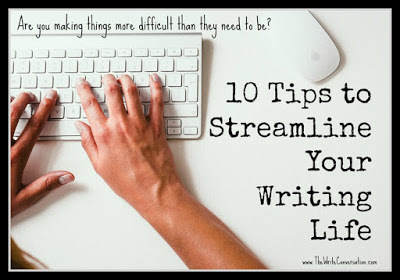 10 Tips to streamline your writing life.So often we make things harder than they have to be. Sometimes we do it because we’re used to doing things a certain way, or because it’s the only way we know how. But things change quickly these days, and it’s always a good thing to take a look at your routine with a fresh eye. Today I’m going to share some tips to streamline your writing life. Some you may already do, some you may not have ever considered. Just take a look at the list with an open mind and see if there’s anything on it that can make your life easier.Tips to Streamline Your Writing Life1. Take a look at your goals. It’s important to have goals—and it’s important to have
written
goals. It’s easy to just float along, taking things as they come. But when we do that, it’s hard to make progress—and it’s even harder to evaluate progress. Beyond that, there’s something almost magical about writing down your goals. Having them recorded somewhere gives them weight and makes it easier to make them a priority.
10 Tips to streamline your writing life.So often we make things harder than they have to be. Sometimes we do it because we’re used to doing things a certain way, or because it’s the only way we know how. But things change quickly these days, and it’s always a good thing to take a look at your routine with a fresh eye. Today I’m going to share some tips to streamline your writing life. Some you may already do, some you may not have ever considered. Just take a look at the list with an open mind and see if there’s anything on it that can make your life easier.Tips to Streamline Your Writing Life1. Take a look at your goals. It’s important to have goals—and it’s important to have
written
goals. It’s easy to just float along, taking things as they come. But when we do that, it’s hard to make progress—and it’s even harder to evaluate progress. Beyond that, there’s something almost magical about writing down your goals. Having them recorded somewhere gives them weight and makes it easier to make them a priority.
2. Evaluate how much time you’re spending on social media. If it’s more than thirty minutes a day, it’s time to re-evaluate. After thirty minutes, your return on investment takes a severe nosedive in the downward direction.
 Let go of your expectations—for yourself & others.3. Let go of your expectations. No this isn’t a contradiction of #1 above. There is a huge difference between goals and expectations. I bet if you’re honest with yourself you have quite a few expectations—from what you expect from yourself, to what you expect from others. For me, when I took a hard look, a lot of those expectations were totally unreasonable. So spend some time and take a hard look at your expectations. The ones that are reasonable, make into goals and priorities. The rest of them . . . well . . . just throw them away.
Let go of your expectations—for yourself & others.3. Let go of your expectations. No this isn’t a contradiction of #1 above. There is a huge difference between goals and expectations. I bet if you’re honest with yourself you have quite a few expectations—from what you expect from yourself, to what you expect from others. For me, when I took a hard look, a lot of those expectations were totally unreasonable. So spend some time and take a hard look at your expectations. The ones that are reasonable, make into goals and priorities. The rest of them . . . well . . . just throw them away.
4. Determine when, in a 24-hour period, you are most creative. Some of us are night people, some are morning people, and some of us work best in the afternoon. But we each have a specific time when the words and ideas tend to flow easier. Look at your internal clock and figure out when that time is. Then, guard it like you’re guarding gold. Really that’s what you’re doing. Our income and dreams are locked up tight with our ability to create. When we figure out the time that work best for creative work, it’s like someone has handed us pure gold.
 Come up with a way to schedule your time.5. Come up with a way to schedule your time. I know not everyone can have a detailed schedule. But truthfully, if you’re trying to carve out time to write (and who isn’t?), you need to schedule that time. There are lots of methods to help with time management from an old fashioned spread sheet to the Pomodoro Technique. Do some research and find something that works for you.
Come up with a way to schedule your time.5. Come up with a way to schedule your time. I know not everyone can have a detailed schedule. But truthfully, if you’re trying to carve out time to write (and who isn’t?), you need to schedule that time. There are lots of methods to help with time management from an old fashioned spread sheet to the Pomodoro Technique. Do some research and find something that works for you.
6. Commit to quit talking negative to and about yourself. When someone bashes our ability and/or our manuscript, it takes time to recover. The same holds true when we do it to ourselves. So take a page from my author friend, Alton Gansky, and QUIT IT!
7. Take care of yourself physically. This means getting enough sleep, eating well, and especially exercising. The sedentary lifestyle of a writer can quickly take its toll on us physically and mentally. Sure these things take time—often time we don’t feel we can spare. But even though this may seem counterintuitive, it will streamline your writing life. You can accomplish so much more when you are physically healthy and mentally alert.
8. Build in regular breaks. Especially when I’m on a deadline, I’ve found that taking regular breaks greatly improves my productivity. A good friend and spiritual mentor of mine Kent Pate has a saying, “Divert daily, withdraw weekly, abandon annually.”
 Surround yourself with encouraging writers.9. Surround yourself with encouraging writers. You don’t just need encouraging friends, but also encouraging writers. We writers are an odd lot, and we need others around us who understand our thought process, our struggles and our quirky joys. These writers should be active and growing—not those who just talk about writing, but those who spend time writing.
Surround yourself with encouraging writers.9. Surround yourself with encouraging writers. You don’t just need encouraging friends, but also encouraging writers. We writers are an odd lot, and we need others around us who understand our thought process, our struggles and our quirky joys. These writers should be active and growing—not those who just talk about writing, but those who spend time writing.
10. Engage a prayer team. This may seem odd, especially if you’re fairly new to even calling yourself a writer, much less having something published. But the truth is, this life is hard. When we answer God’s call to step out and share His message, we’re going to encounter spiritual warfare. For that, you need people to pray for you. If you’re also building a ministry, trying to grow an income and/or beginning to speak, that’s even more of a reason to surround yourself with prayer. These folks don’t have to be writers, but they should have a connection to you.
These are just some of the things that do to help my writing life stay manageable. I’m sure there are lots of other things that would help as well. Be sure to chime in with your suggestions in the comments section below.
Don’t forget to join the conversation!Blessings,Edie
TWEETABLESSo often we make life harder than it needs to be – tips to streamline your #writing - @EdieMelson (Click to Tweet)
10 tips to help streamline your #writing life – from author@EdieMelson (Click to Tweet)
 10 Tips to streamline your writing life.So often we make things harder than they have to be. Sometimes we do it because we’re used to doing things a certain way, or because it’s the only way we know how. But things change quickly these days, and it’s always a good thing to take a look at your routine with a fresh eye. Today I’m going to share some tips to streamline your writing life. Some you may already do, some you may not have ever considered. Just take a look at the list with an open mind and see if there’s anything on it that can make your life easier.Tips to Streamline Your Writing Life1. Take a look at your goals. It’s important to have goals—and it’s important to have
written
goals. It’s easy to just float along, taking things as they come. But when we do that, it’s hard to make progress—and it’s even harder to evaluate progress. Beyond that, there’s something almost magical about writing down your goals. Having them recorded somewhere gives them weight and makes it easier to make them a priority.
10 Tips to streamline your writing life.So often we make things harder than they have to be. Sometimes we do it because we’re used to doing things a certain way, or because it’s the only way we know how. But things change quickly these days, and it’s always a good thing to take a look at your routine with a fresh eye. Today I’m going to share some tips to streamline your writing life. Some you may already do, some you may not have ever considered. Just take a look at the list with an open mind and see if there’s anything on it that can make your life easier.Tips to Streamline Your Writing Life1. Take a look at your goals. It’s important to have goals—and it’s important to have
written
goals. It’s easy to just float along, taking things as they come. But when we do that, it’s hard to make progress—and it’s even harder to evaluate progress. Beyond that, there’s something almost magical about writing down your goals. Having them recorded somewhere gives them weight and makes it easier to make them a priority.2. Evaluate how much time you’re spending on social media. If it’s more than thirty minutes a day, it’s time to re-evaluate. After thirty minutes, your return on investment takes a severe nosedive in the downward direction.
 Let go of your expectations—for yourself & others.3. Let go of your expectations. No this isn’t a contradiction of #1 above. There is a huge difference between goals and expectations. I bet if you’re honest with yourself you have quite a few expectations—from what you expect from yourself, to what you expect from others. For me, when I took a hard look, a lot of those expectations were totally unreasonable. So spend some time and take a hard look at your expectations. The ones that are reasonable, make into goals and priorities. The rest of them . . . well . . . just throw them away.
Let go of your expectations—for yourself & others.3. Let go of your expectations. No this isn’t a contradiction of #1 above. There is a huge difference between goals and expectations. I bet if you’re honest with yourself you have quite a few expectations—from what you expect from yourself, to what you expect from others. For me, when I took a hard look, a lot of those expectations were totally unreasonable. So spend some time and take a hard look at your expectations. The ones that are reasonable, make into goals and priorities. The rest of them . . . well . . . just throw them away. 4. Determine when, in a 24-hour period, you are most creative. Some of us are night people, some are morning people, and some of us work best in the afternoon. But we each have a specific time when the words and ideas tend to flow easier. Look at your internal clock and figure out when that time is. Then, guard it like you’re guarding gold. Really that’s what you’re doing. Our income and dreams are locked up tight with our ability to create. When we figure out the time that work best for creative work, it’s like someone has handed us pure gold.
 Come up with a way to schedule your time.5. Come up with a way to schedule your time. I know not everyone can have a detailed schedule. But truthfully, if you’re trying to carve out time to write (and who isn’t?), you need to schedule that time. There are lots of methods to help with time management from an old fashioned spread sheet to the Pomodoro Technique. Do some research and find something that works for you.
Come up with a way to schedule your time.5. Come up with a way to schedule your time. I know not everyone can have a detailed schedule. But truthfully, if you’re trying to carve out time to write (and who isn’t?), you need to schedule that time. There are lots of methods to help with time management from an old fashioned spread sheet to the Pomodoro Technique. Do some research and find something that works for you.6. Commit to quit talking negative to and about yourself. When someone bashes our ability and/or our manuscript, it takes time to recover. The same holds true when we do it to ourselves. So take a page from my author friend, Alton Gansky, and QUIT IT!
7. Take care of yourself physically. This means getting enough sleep, eating well, and especially exercising. The sedentary lifestyle of a writer can quickly take its toll on us physically and mentally. Sure these things take time—often time we don’t feel we can spare. But even though this may seem counterintuitive, it will streamline your writing life. You can accomplish so much more when you are physically healthy and mentally alert.
8. Build in regular breaks. Especially when I’m on a deadline, I’ve found that taking regular breaks greatly improves my productivity. A good friend and spiritual mentor of mine Kent Pate has a saying, “Divert daily, withdraw weekly, abandon annually.”
 Surround yourself with encouraging writers.9. Surround yourself with encouraging writers. You don’t just need encouraging friends, but also encouraging writers. We writers are an odd lot, and we need others around us who understand our thought process, our struggles and our quirky joys. These writers should be active and growing—not those who just talk about writing, but those who spend time writing.
Surround yourself with encouraging writers.9. Surround yourself with encouraging writers. You don’t just need encouraging friends, but also encouraging writers. We writers are an odd lot, and we need others around us who understand our thought process, our struggles and our quirky joys. These writers should be active and growing—not those who just talk about writing, but those who spend time writing.10. Engage a prayer team. This may seem odd, especially if you’re fairly new to even calling yourself a writer, much less having something published. But the truth is, this life is hard. When we answer God’s call to step out and share His message, we’re going to encounter spiritual warfare. For that, you need people to pray for you. If you’re also building a ministry, trying to grow an income and/or beginning to speak, that’s even more of a reason to surround yourself with prayer. These folks don’t have to be writers, but they should have a connection to you.
These are just some of the things that do to help my writing life stay manageable. I’m sure there are lots of other things that would help as well. Be sure to chime in with your suggestions in the comments section below.
Don’t forget to join the conversation!Blessings,Edie
TWEETABLESSo often we make life harder than it needs to be – tips to streamline your #writing - @EdieMelson (Click to Tweet)
10 tips to help streamline your #writing life – from author@EdieMelson (Click to Tweet)
Published on June 02, 2015 01:00
June 1, 2015
Social Media Basics for Writers—Part One, Know Where You Are & Where You’re Headed!
By Edie Melson @EdieMelson
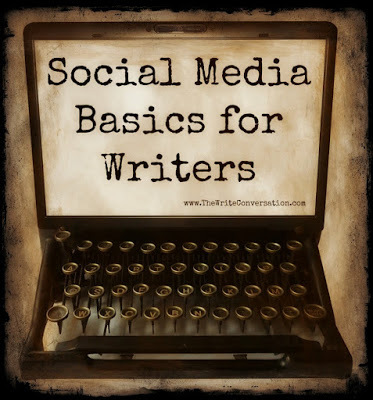 Today I’m starting a new series, Social Media Basics for Writers. I’m going to lay out the steps to build your online presence into a solid platform that enhances you as an author.
Today I’m starting a new series, Social Media Basics for Writers. I’m going to lay out the steps to build your online presence into a solid platform that enhances you as an author.
Be sure to ask questions as we go along, because I’ll partially base my content on the feedback I get from you.
When I teach social networking, I encourage people to relax and not take on too much at once.
I want to begin by talking about the most common mistake I see in social networking: the approach. Because social media can reach millions, it’s waytoo easy to think of it as mass marketing. In reality it’s about one-on-one relationships.That is the beauty and the dichotomy of the medium. It can be overwhelming—this building relationships with millions—especially when our goal is writing, not advertising. Now the good news: Social networking is not asdifficult as it seems.
 Social Media is a return to small town thinking.In many ways, it’s a return to small town thinking. In times past, peoplepatronized merchants because the proprietors were their neighbors or friends. In this day and time, we also find neighbors and friends on Facebook, Twitter and in blogging communities. And those communities are where we need to concentrate our efforts.
Social Media is a return to small town thinking.In many ways, it’s a return to small town thinking. In times past, peoplepatronized merchants because the proprietors were their neighbors or friends. In this day and time, we also find neighbors and friends on Facebook, Twitter and in blogging communities. And those communities are where we need to concentrate our efforts.
It's vitally important to realize that, despite the bad rap it's gotten, social networking and writers are a natural match. Social networking is all about connecting with people through our words—not walking into a room full of strangers, standing on a platform and speaking. We can sit at our desks, write and reach the entire world.
That said, it IS all about connecting with others. If you're NOT willing to be found by others, then the writing industry as it stands today is gonna be tough for you.
So how do you go about plotting your social media course? There are two things you need: You’ve got to know where you are.You’ve got to know where you’re going. You are here.You are HereTo evaluate where you are, you need to know your numbers. How many friends/followers do you have on Facebook?How many followers do you have on Twitter?What other social media networks are you a part of? Pinterest, LinkedIn, Instagram, etc. Add those numbers here.You also need to know where you rank in search engines. Plug your name into Google and see where you are. Do you show up on the first page of a Google search?Plug your name into other search engines (bing.com, ask.com, etc) and see where you show up there, too.Now search your blog name, if it’s different from your name, and see where you show up.Finally, search some of your blog topics. Don’t just search your blog post titles, but the actual topics. For instance, I wrote a post titled,
Social Media Monday—How Facebook Changes for 2015 CouldAffect Authors.
When plug that title into the search engine, it comes up number one in the search. But when I search Facebook Changes Affect Authors, I still come up number two.That’s ultimately what we’re shooting for, to be found by topic, not just by someone already knowing our name.
You are here.You are HereTo evaluate where you are, you need to know your numbers. How many friends/followers do you have on Facebook?How many followers do you have on Twitter?What other social media networks are you a part of? Pinterest, LinkedIn, Instagram, etc. Add those numbers here.You also need to know where you rank in search engines. Plug your name into Google and see where you are. Do you show up on the first page of a Google search?Plug your name into other search engines (bing.com, ask.com, etc) and see where you show up there, too.Now search your blog name, if it’s different from your name, and see where you show up.Finally, search some of your blog topics. Don’t just search your blog post titles, but the actual topics. For instance, I wrote a post titled,
Social Media Monday—How Facebook Changes for 2015 CouldAffect Authors.
When plug that title into the search engine, it comes up number one in the search. But when I search Facebook Changes Affect Authors, I still come up number two.That’s ultimately what we’re shooting for, to be found by topic, not just by someone already knowing our name.
First, we shoot for getting our names high in the search engine rankings. Then when we’re on the Internet map, we increase our visibility by getting known topically.
 Plot your course.Plot Your CourseIt’s hard to get somewhere unless we know where we’re going. One of the easiest ways to get somewhere is to follow someone. So for this part, you need to think about two or three people who are where you want to be in the social media universe. Don’t just choose random, well-known people. Put some thought in this and look at people who write things similar to you. You’re going to use their path to success to guide you, so choose well.
Plot your course.Plot Your CourseIt’s hard to get somewhere unless we know where we’re going. One of the easiest ways to get somewhere is to follow someone. So for this part, you need to think about two or three people who are where you want to be in the social media universe. Don’t just choose random, well-known people. Put some thought in this and look at people who write things similar to you. You’re going to use their path to success to guide you, so choose well.
Check their Social Media NumbersDo the same things with their names, as you did with yours.Look at their Facebook friends/followers.Check how many followers they have on Twitter.Look at the other social media networks they’re a part of. To do this, visit their websites to see what networks they find important.Check their Search Engine RankingPlug their names into Google and look at what you find.Now do the same thing with other search engines and make note of where they rank.In the weeks to come, we’ll incorporate this information into plotting your course so don’t skimp on the time it takes to do this research. I’d love to hear what you found when you followed the suggestions above. I’d also love for you to share your thoughts and questions in the comments section below.
Don’t forget to join the conversation!Blessings,Edie
TWEETABLES#SocialMedia Basics for Writers—Know Where You Are & Where You’re Headed! @EdieMelson (Click toTweet)
Don’t skip the #SocialMedia basics - Evaluate Where You Are & Where You’re Headed. @EdieMelson (Click to Tweet)
 Today I’m starting a new series, Social Media Basics for Writers. I’m going to lay out the steps to build your online presence into a solid platform that enhances you as an author.
Today I’m starting a new series, Social Media Basics for Writers. I’m going to lay out the steps to build your online presence into a solid platform that enhances you as an author. Be sure to ask questions as we go along, because I’ll partially base my content on the feedback I get from you.
When I teach social networking, I encourage people to relax and not take on too much at once.
I want to begin by talking about the most common mistake I see in social networking: the approach. Because social media can reach millions, it’s waytoo easy to think of it as mass marketing. In reality it’s about one-on-one relationships.That is the beauty and the dichotomy of the medium. It can be overwhelming—this building relationships with millions—especially when our goal is writing, not advertising. Now the good news: Social networking is not asdifficult as it seems.
 Social Media is a return to small town thinking.In many ways, it’s a return to small town thinking. In times past, peoplepatronized merchants because the proprietors were their neighbors or friends. In this day and time, we also find neighbors and friends on Facebook, Twitter and in blogging communities. And those communities are where we need to concentrate our efforts.
Social Media is a return to small town thinking.In many ways, it’s a return to small town thinking. In times past, peoplepatronized merchants because the proprietors were their neighbors or friends. In this day and time, we also find neighbors and friends on Facebook, Twitter and in blogging communities. And those communities are where we need to concentrate our efforts.It's vitally important to realize that, despite the bad rap it's gotten, social networking and writers are a natural match. Social networking is all about connecting with people through our words—not walking into a room full of strangers, standing on a platform and speaking. We can sit at our desks, write and reach the entire world.
That said, it IS all about connecting with others. If you're NOT willing to be found by others, then the writing industry as it stands today is gonna be tough for you.
So how do you go about plotting your social media course? There are two things you need: You’ve got to know where you are.You’ve got to know where you’re going.
 You are here.You are HereTo evaluate where you are, you need to know your numbers. How many friends/followers do you have on Facebook?How many followers do you have on Twitter?What other social media networks are you a part of? Pinterest, LinkedIn, Instagram, etc. Add those numbers here.You also need to know where you rank in search engines. Plug your name into Google and see where you are. Do you show up on the first page of a Google search?Plug your name into other search engines (bing.com, ask.com, etc) and see where you show up there, too.Now search your blog name, if it’s different from your name, and see where you show up.Finally, search some of your blog topics. Don’t just search your blog post titles, but the actual topics. For instance, I wrote a post titled,
Social Media Monday—How Facebook Changes for 2015 CouldAffect Authors.
When plug that title into the search engine, it comes up number one in the search. But when I search Facebook Changes Affect Authors, I still come up number two.That’s ultimately what we’re shooting for, to be found by topic, not just by someone already knowing our name.
You are here.You are HereTo evaluate where you are, you need to know your numbers. How many friends/followers do you have on Facebook?How many followers do you have on Twitter?What other social media networks are you a part of? Pinterest, LinkedIn, Instagram, etc. Add those numbers here.You also need to know where you rank in search engines. Plug your name into Google and see where you are. Do you show up on the first page of a Google search?Plug your name into other search engines (bing.com, ask.com, etc) and see where you show up there, too.Now search your blog name, if it’s different from your name, and see where you show up.Finally, search some of your blog topics. Don’t just search your blog post titles, but the actual topics. For instance, I wrote a post titled,
Social Media Monday—How Facebook Changes for 2015 CouldAffect Authors.
When plug that title into the search engine, it comes up number one in the search. But when I search Facebook Changes Affect Authors, I still come up number two.That’s ultimately what we’re shooting for, to be found by topic, not just by someone already knowing our name. First, we shoot for getting our names high in the search engine rankings. Then when we’re on the Internet map, we increase our visibility by getting known topically.
 Plot your course.Plot Your CourseIt’s hard to get somewhere unless we know where we’re going. One of the easiest ways to get somewhere is to follow someone. So for this part, you need to think about two or three people who are where you want to be in the social media universe. Don’t just choose random, well-known people. Put some thought in this and look at people who write things similar to you. You’re going to use their path to success to guide you, so choose well.
Plot your course.Plot Your CourseIt’s hard to get somewhere unless we know where we’re going. One of the easiest ways to get somewhere is to follow someone. So for this part, you need to think about two or three people who are where you want to be in the social media universe. Don’t just choose random, well-known people. Put some thought in this and look at people who write things similar to you. You’re going to use their path to success to guide you, so choose well.Check their Social Media NumbersDo the same things with their names, as you did with yours.Look at their Facebook friends/followers.Check how many followers they have on Twitter.Look at the other social media networks they’re a part of. To do this, visit their websites to see what networks they find important.Check their Search Engine RankingPlug their names into Google and look at what you find.Now do the same thing with other search engines and make note of where they rank.In the weeks to come, we’ll incorporate this information into plotting your course so don’t skimp on the time it takes to do this research. I’d love to hear what you found when you followed the suggestions above. I’d also love for you to share your thoughts and questions in the comments section below.
Don’t forget to join the conversation!Blessings,Edie
TWEETABLES#SocialMedia Basics for Writers—Know Where You Are & Where You’re Headed! @EdieMelson (Click toTweet)
Don’t skip the #SocialMedia basics - Evaluate Where You Are & Where You’re Headed. @EdieMelson (Click to Tweet)
Published on June 01, 2015 01:00



